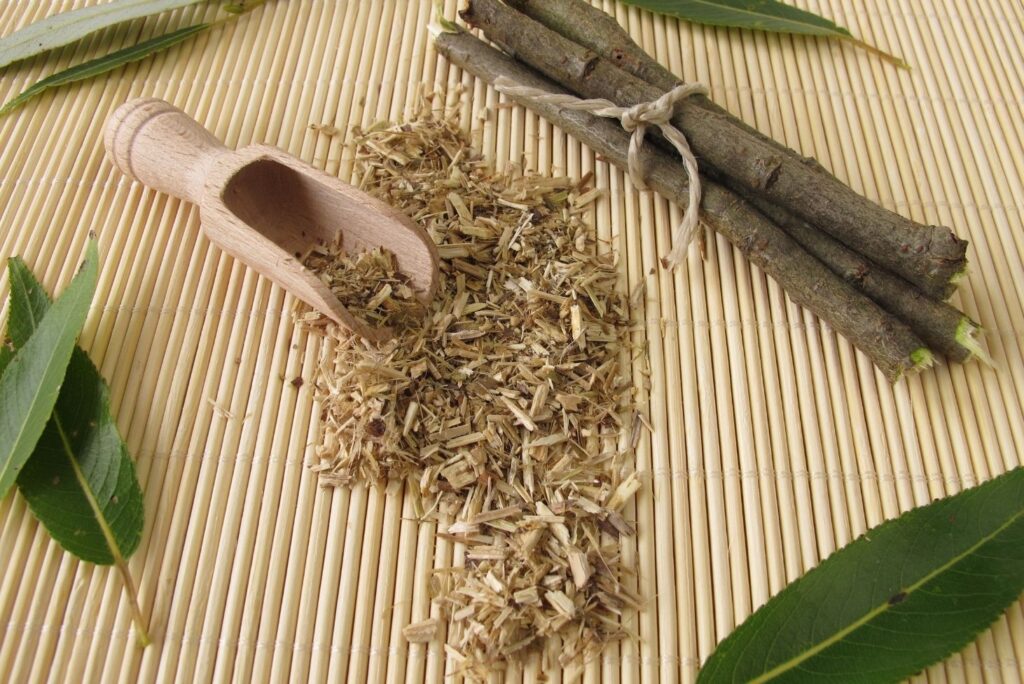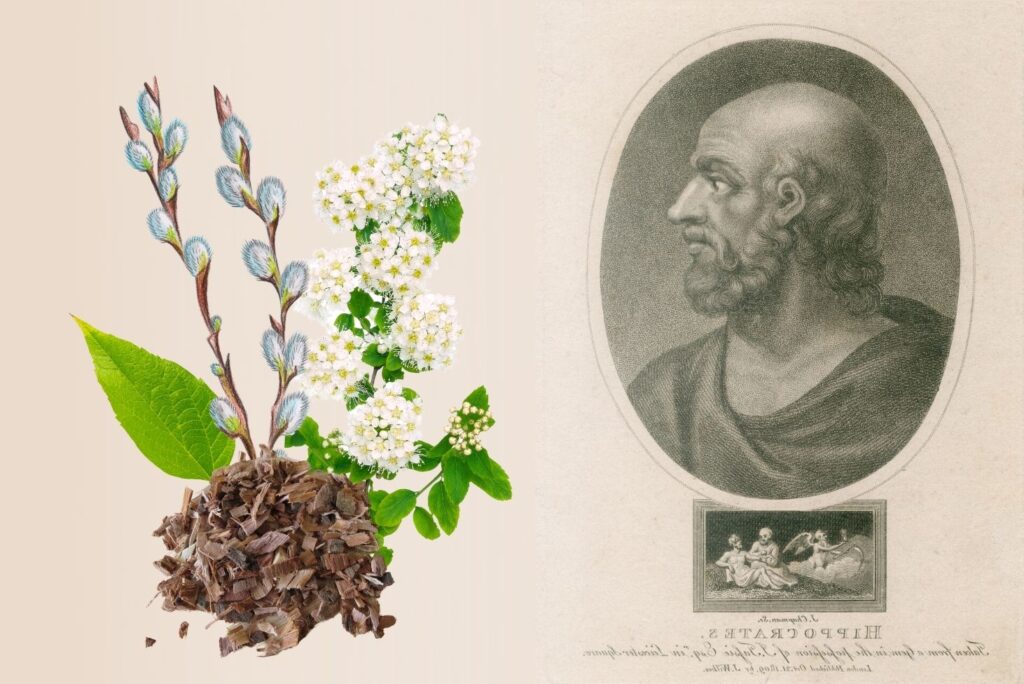If you want to learn how to make aspirin at home, an aspirin that is 100% natural and easily absorbed into the body, continue reading this article. But first.
Aspirin is one of the most popular anti-inflammatory drugs in the world. But did you know that most aspirin on the market is synthetic and has many side effects? The good news is that you can make aspirin at home, following a simple natural recipe that requires just a couple of ingredients. Before we show you how to make aspirin at home, let’s go through a few interesting aspects regarding aspiring, and most importantly why natural aspirin is a better alternative to synthetic aspirin.
In This Article You Will Find:
How Aspirin Was Discovered
Two thousand three hundred years before the German biochemist Felix Hoffmann discovered the method of extracting acetylsalicylic acid, the Greek physician Hippocrates wrote in his treatises about the willow bark powder, as a cure for pain caused by exposure to wind. In the Middle Ages, alchemists introduced willow powder into their long-lived elixirs, but also to the secret medicine formulas for the relentless epidemics of the time.
Around 1700, the British Rev. Edward Stone attested to the willow bark’s properties in reducing fever and pain and issued a scientific communication to the British Royal Society. In 1828, a French pharmacist, Henri Leroux, and an Italian biochemist, Raffaele Piria, succeeded in extracting an acid called salicylic acid from willow bark, which reduced fever at an impressive rate and induced vasodilation. At the beginning of the 20th century, acetylsalicylic acid (synthetic aspirin) was put on the market, and the first worldwide recognition of aspirin occurred during the Spanish flu epidemic of 1918-1919, where it was used to alleviate those afflicted with fever and pain.
Later research has shown that synthetic aspirin was both a cure and a curse during the Spanish flu epidemic. On the one hand, it alleviated the suffering of many, on the other hand, statistics showed that considerably more people have died during the Spanish flu epidemic due to lowered immunity caused by overdosing on aspirin. You’ve read that correctly.
Synthetic Aspirin VS Natural Aspirin
Aspirin as we know it is a synthetic drug made through processing alcohol (phenol) at high temperature and pressure, in the presence of sulfuric acid. This process results in pure salicylic acid, a not very edible substance, that lowers fever and produces vasodilation, but strongly affects both the stomach linen and the blood vessels. Therefore, salicylic acid is passed through another process, and this is how acetylsalicylic acid is made, ie synthetic aspirin, which is a little more friendly to the body, in short-term use.
In the medium and long term, however, aspirin weakens the walls of the blood vessels, creating the perfect environment for strokes, it lowers immunity, affects the stomach and the gut, the nervous system, and so on. Although it is the best-tolerated synthetic drug by the human body, aspirin comes with more side effects than benefits and, in addition, it is far less effective than its precursor, the natural aspirin.
Natural aspirin, on the other hand, is a blend of salicylic acid salts, found in the bark of various species of willow, but also in the stems of other plants, such as meadowsweet, purple loosestrife, or poplar buds. In these plants, the salicylic acid salts are mixed with other natural compounds, that complement and temper their action, making them perfectly compatible with the human body. Unlike synthetic aspirin, natural aspirin is very gentle on the stomach and the digestive tract, can only negatively affects the blood vessels when taken in very high doses, and has little to no negative impact on immunity.
But most importantly, natural aspirin is a much better aid against pain and inflammation than synthetic aspirin, due to its strong detoxifying action. This explains the impressive number of therapeutic uses of natural aspirin.

What Is Aspirin Used For?
Biologists have observed that many species of animals, including carnivores, consume plants rich in salicylates, not for feeding, but only as therapy. Later studies showed another amazing thing – the human body has the ability to convert small amounts of organic vegetal matter into salicylic acid salts (salicylates), the precursors of aspirin.
What does the human body need aspirin for? First of all, to regulate the pain sensation in the brain, so that the perception of pain is within certain limits so as to not paralyze the other functions of the body. Then, salicylates intervene in the healing processes of inflammatory diseases and also regulate blood pressure and circulation.
How to Make Aspirin at Home
This recipe makes a high concentration natural aspirin alternative, with comparable, if not stronger, effects than synthetic aspirin and is made from willow bark powder extract and zeolite. Zeolite potentiates the effect of salicylates in willow bark extract, and on the other hand has a slightly immunostimulating action, very useful to compensate for some of the actions of aspirin. Here is how to make aspirin at home, that is 100% natural.
Ingredients
- 30 g willow bark powder extract (Salix alba)
- 12 g zeolite powder
- 60 vegan capsules (size 0)
How to Make
Mix the willow bark extract powder with the zeolite powder. For the next part, you will need a gram scale and a small spatula. Fill each of the 60 capsules with 0,7 grams of powder and store the pills in a glass jar with a lid. This quantity makes 60 capsules of natural aspirin, of 500 mg willow bark powder extract each.
How to Use
The regular daily dose is 1-2 capsules per day, as directed by a physician. It can be used in a 30-day course, followed by a 15-day break, but this varies depending on the health condition.

Natural Aspirin Uses
Natural willow bark extract has been studied intensively over the last decades, and the results of these studies have proven its efficacy for the following medical problems:
- lower back pain – (600-1200 mg/day) study
- headache and migraines – 1-2 capsules/day
- osteoporosis pain – 1-2 capsules/day
- rheumatic pain – 1-2 capsules/day for 7-10 days, pause for 20 days, and resume if needed.
- weather pains – 1-2 capsules/day for 7 days
- menstrual cramps – 1-2 capsules/day before meals
- tendonitis, bursitis, sore muscles – 1-2 capsules/day before meals for 2-4 weeks
- high blood pressure adjuvant – 1 capsule/day for 6 weeks, pause for 2 weeks, and resume if needed.
- thrombophlebitis – 1-2 capsules/day
- diabetes
- fever (fever is an aid to the body’s fight against infections or tumors and, should not be lowered artificially unless the body temperature rises excessively!) – 1 capsule
- cold and flu – 1-2 capsules/day
Safety and Precaution
Natural aspirin is not recommended for people sensitive to synthetic aspirin, as well as pregnant or breastfeeding women. Willow extract should be used with caution in case of blood clotting disorders, severe kidney and liver disease, and gastroduodenal ulcer.
Other Natural Aspirin Alternatives
In addition to the natural aspirin capsules that you can make at home, there are two other simple natural alternatives to aspirin in the form of herbal teas. The first one is a combined willow bark combined infusion.
- Put 2 teaspoons of willow bark in a cup of water and soak for 6-8 hours at room temperature, then strain. Set the extract aside and boil the used willow bark for five minutes in another cup of water. Allow to cool off for 20 minutes, and then combine the two extracts and drink the decoction over the course of a day.
Another alternative to aspirin is meadowsweet or purple loosestrife infusion, which you can prepare the same way as the willow bark one above. You can use either one of these plants. The stems and leaves of these medicinal plants contain appreciable amounts of salicylates, which can be extracted in the combined infusion. Drink 3 cups a day, 15 minutes before meals.
Read Also: 9 Herbs That Dissolve Blood Clots Naturally
If you’ve learned something useful from this article, please share it on social media so more people learn how to make aspirin at home with simple and natural ingredients. Stay healthy, naturally!



